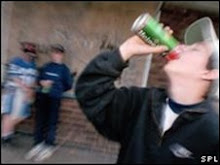A key aspect of evaluating our programs will be the extent to which our outcomes are measurable. Much of what we are measuring is the perceptions of the participant which means we must be cautious when generalizing the findings of our samples. In addition, we must use caution when examining changes in public and representations of youth in these communities. This information cannot be used as a direct account of how perceptions of youth have or have not changed. They must instead be used as a secondary source of information to further the understandings of the primary information gathered from the first-hand accounts of participants.
We will use these results to generalize our findings to the community from which our sample. This mixed-methods approach provides multiple sources of information from which we can generate an understanding of how our programs have influenced these communities. However, we will interpret our results with caution in that our information will not be gathered over an extended period of time. Therefore, our results must be considered in the ever-changing climate in which they were produced in and be interpreted accordingly to the place and time in which they were gathered.
Furthermore, because communities are very diverse across the province of Ontario, we will not generalize our results on a larger scale. Instead, we will see our programs as a mean of informing various institutions including government, education, and the public about our findings. Our results will be treated as community case studies to demonstrate the ability or inability to endorse accurate perceptions about alcohol and youth which is the essence of our approach. This reflects our realistic goal of creating a social climate that will allow us to work towards reconsidering the current legal drinking age.
In addition, we will explore what drives our evaluations. Because youth and alcohol are very ideologically bound topics, it is important that we are realistic about the results of our programs. We must not expect immediate change and continue to modify those aspects which are not helping this process. We also must maintain that our objectives aim to transform the social climate around youth and alcohol. It may be easy to become preoccupied with our greater goal of changing the legal drinking age to 18. Therefore, we will need to closely monitor our outcomes evaluation methods to ensure the outcome of focus lies in changing the social climate.
Friday, November 21, 2008
Subscribe to:
Post Comments (Atom)


No comments:
Post a Comment